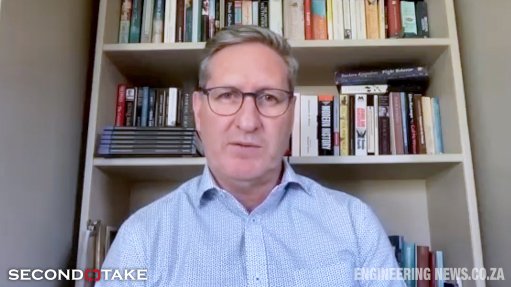Unemployment rate worsens to 32.9%


Job seekers waiting for casual work next to a road in Johannesburg
Photo by Reuters
South Africa’s official unemployment rate has widened by 0.8 of a percentage point to 32.9% in the first quarter of the year, compared with 32.1% in the fourth quarter of last year.
The number of employed people in South Africa increased by 22 000 to 16.7-million, but the number of unemployed people increased by 330 000 to 8.2-million, Statistics South Africa (Stats SA) reports.
Further, according to the expanded definition, the unemployment rate increased to 41.9% in the first quarter of the year.
Stats SA reports that people aged between 15 and 34 years remain the most vulnerable in the labour market, with the number of unemployed youth having increased by 236 000 to 4.9-million in the quarter.
The youth unemployment rate, however, decreased by 1.3 percentage points to 44.5% in the first quarter.
Moreover, the number of people who were not economically active for reasons other than discouragement decreased by 214 000 to 13.1-million, while discouraged work seekers decreased by 1 000. This resulted in a net decrease of 215 000 in the “not economically active” population in the first quarter.
Stats SA finds that formal sector employment increased by 56 000 in the period, while informal sector employment decreased by 100 000 in the quarter.
The industries accounting for a net employment increase include trade, with 109 000 jobs, manufacturing with 99 000 jobs, private households with 44 000 jobs and transport with 39 000 jobs.
Encouragingly, the agriculture and mining sectors also continued to grow employment opportunities in the quarter, by 21 000 and 9 000 jobs, respectively.
Employment losses were mostly recorded in community and social services, with the sector having lost 122 000 jobs, construction losing 106 000 jobs, finance losing 50 000 jobs and utilities losing 17 000 jobs.
KwaZulu-Natal and Gauteng recorded increases in employment of 35 000 and 26 000, respectively, as did the Northern Cape, with 4 000 more jobs. Decreases were recorded in the Western Cape (17 000), North West (13 000), Mpumalanga (8 000), Eastern Cape (4 000) and Limpopo (3 000).
Employment numbers in the Free State remained unchanged.
Financial services provider Nedbank comments that the increase in employment was owing to seasonal factors in the labour force, as new graduates and school leavers entered the job market. The bank explains that discouraged workers also usually return to the market at the start of the year with hopes of finding a job.
The slow-growing economy nonetheless created too few jobs to absorb the growth in the labour force, despite less disruptive loadshedding, firmed global demand for commodities and higher commodity prices.
The financial sector, which is usually a strong employment creator, recorded lower figures in the quarter as credit growth slowed and impairments remained elevated.
According to Nedbank, the outlook for the job market remains poor, with employment in the services industries poised to stagnate as restrictive monetary policy weighs on domestic demand and hurts confidence. Consumers will also remain wary of spending and undertake fixed investment.
Simultaneously, public sector employment continues to be restricted by government caps on staff numbers to support necessary fiscal consolidation.
Nedbank adds that most producers and exporters will focus on restoring profit margins in the months ahead, which were severely depleted by disruptions last year, including a surge in operating costs.
The bank does not foresee job creation to tick up in 2024 and will only recover once inflation declines to about 4.5% and the South African Reserve Bank can reduce interest rates more significantly.
FNB says the level of employment in the first quarter of the year was an increase of 3.4% compared with the first quarter of last year, which is positive.
The bank expects a marginal increase in employment opportunities in the year ahead but remains concerned about the structural constraints on growth that have let to low economic growth projects for the year. "Addressing these structural constraints will be critical to achieving sustained economic growth and reducing unemployment rates in the long term," it concludes.
Comments
Press Office
Announcements
What's On
Subscribe to improve your user experience...
Option 1 (equivalent of R125 a month):
Receive a weekly copy of Creamer Media's Engineering News & Mining Weekly magazine
(print copy for those in South Africa and e-magazine for those outside of South Africa)
Receive daily email newsletters
Access to full search results
Access archive of magazine back copies
Access to Projects in Progress
Access to ONE Research Report of your choice in PDF format
Option 2 (equivalent of R375 a month):
All benefits from Option 1
PLUS
Access to Creamer Media's Research Channel Africa for ALL Research Reports, in PDF format, on various industrial and mining sectors
including Electricity; Water; Energy Transition; Hydrogen; Roads, Rail and Ports; Coal; Gold; Platinum; Battery Metals; etc.
Already a subscriber?
Forgotten your password?
Receive weekly copy of Creamer Media's Engineering News & Mining Weekly magazine (print copy for those in South Africa and e-magazine for those outside of South Africa)
➕
Recieve daily email newsletters
➕
Access to full search results
➕
Access archive of magazine back copies
➕
Access to Projects in Progress
➕
Access to ONE Research Report of your choice in PDF format
RESEARCH CHANNEL AFRICA
R4500 (equivalent of R375 a month)
SUBSCRIBEAll benefits from Option 1
➕
Access to Creamer Media's Research Channel Africa for ALL Research Reports on various industrial and mining sectors, in PDF format, including on:
Electricity
➕
Water
➕
Energy Transition
➕
Hydrogen
➕
Roads, Rail and Ports
➕
Coal
➕
Gold
➕
Platinum
➕
Battery Metals
➕
etc.
Receive all benefits from Option 1 or Option 2 delivered to numerous people at your company
➕
Multiple User names and Passwords for simultaneous log-ins
➕
Intranet integration access to all in your organisation



















